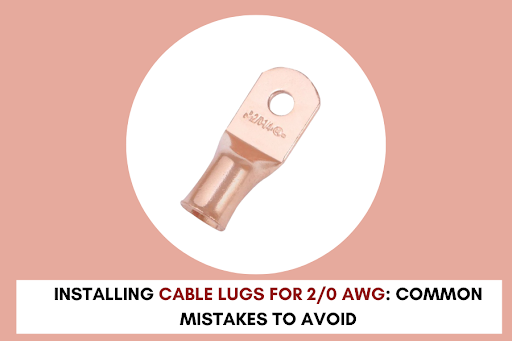Table of Contents
Changing Attitudes About Conservatories
Conservatories are a favorite among British homeowners. They offer an open and spacious space that can bridge the gap between inside and outdoors. However, as lifestyles, tastes and property demands have changed, so has the value question. By 2025, homeowners aren’t only thinking about adding space; they’re now looking at the efficiency of their energy, all-year-round useability as well as the ROI. In spite of changing trends in design and increasing costs for renovations to homes, conservatories are still in their spot; however, it’s not the same building that people think of from the past.
A New Conservatory is a Unique Proposition
The contemporary conservatory is far apart from those cold single-glazed and cold boxes that were common in the past. With the advancement of roof insulation as well as thermally efficient glass and custom-designed designs, today’s conservatories are living spaces suitable for any season. They can be used for dining area or family hub, home office, or even an extension to the kitchen. A high-spec conservatory is now more of an ordinary room and not as a seasonal addition.
This has triggered an important shift in the way people see their worth. A well-designed conservatory is now able to be a good substitute for a fully-fledged extension in both comfort and quality, but often with a lower price and with fewer planning challenges.
Boosting Property Value and Buyer Appeal
Estate agents regularly report that more usable space enhances a home’s appeal. A well-designed conservatory remains a crucial selling feature. By 2025, rooms will still be in high demand. For working from home, entertaining or a way to connect with the outdoors, buyers are looking for flexibility. A conservatory constructed and finished according to contemporary standards will meet the criteria.
It’s not all about size, it’s about function and design. A conservatory that is poorly designed and constructed with an old polycarbonate roof or a cold floor could end up being viewed as negative. However, having the warm, tiled roof and bi-fold doors as well as heating that is integrated could easily increase the price and make a house stand out in a competitive market.
Energy Efficiency and Running Costs Matter More Than Ever

As UK people are conscious of their consumption of energy and other costs of living, a room that is a source of heat loss or overheats rapidly is not likely to be considered an investment. This is when the specification becomes essential. In 2025, the most efficient conservatories are constructed using sustainability in mind and energy efficiency. Low-emissivity glass, solar-controlled windows, and insulation that is high-quality as well as roof lanterns that give the space with passive lightin,g all ensure that the space adds value to the house and does not burden it.
Local installers who are aware of the current building regulations as well as new efficiency standards are essential in this. A little more investment during the construction phase ensures that the space is well-functioning without racking up heating costs or needing expensive retrofitting later on.
Alternative Uses Are Driving Renewed Interest
Homeowners are now using conservatories in a variety of innovative ways. Although the traditional sunroom exists, many are planning the space as an extension of the kitchen, a dining area with a view of the garden as a yoga room or a tranquil home office. Since conservatories can be adapted and are typically easier to build than brick extensions, they provide the flexibility to meet the changing needs of families.
The flexibility of the space is one of the primary reasons why they can provide a strong ROI. A space that is flexible can change as you do — changing into an office, nursery or a comfortable space over timeit can last longer and can be integrated into your daily living positively and effectively.
Planning Permission and Installation Timeframes
As opposed to full extensions, conservatories are usually built under the permitted development rights as long as they remain within the size limit and meet other fundamental requirements. This will significantly cut down the time required to build, as well as paperwork costs. In a time when homeowners need results fast, Conservatories can be an efficient method to get usable area without the hassle of months of interruption.
The 2025 builders are more attentive than ever before to the latest design standards as well as local authority guidance and the integration of the existing architecture. Some even provide designing and planning support as a part of the package to ensure that the investment is rewarded without stress.
The Aesthetic Edge: Style Has Caught Up With Function
Modern conservatories aren’t restricted only to plain white PVC frames or simple forms. Owners of homes can pick from a range of colors, materials, and finishes. Anthracite frames that are slimline, gray profiles, glass-to-glass corners, along with seamless rooflines, have helped push conservatories into the realms of contemporary home design. Its ability to mix and make a statement against brickwork or flooring in the interior, or utilize the identical lighting scheme, can make the transition from house to conservatory a lot more sophisticated than it was in the past.
In this manner, conservatories not only create more space, but also enhance the whole ground-floor living space. When it’s combined with a terrace or patio space, it can become the center of your home, a place where views of the garden and indoor comfort are a perfect match.
Still a Strong Investment When Done Right
The market for conservatories has matured. The homeowners aren’t building glass rooms solely to add a sense of fun or for occasional summer use. By 2025, conservatories will be planned to improve how a house operates as well as how it feels and, ultimately its value.
However, there are many different conservatories, and not all of them are made the same. For a real return on investment, it’s essential to employ a trustworthy installer, choose the best materials to suit the space and focus on energy efficiency. A poorly-fitted or obsolete design could have negative effects and could cost a lot to fix or replace afterward.




